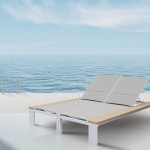Difference Between Wrought Iron and Steel


Wrought Iron
Wrought iron refers to both a process of formation and a type of metal. It is a specific variety of iron with various additives making it a low corrosive and more pliable. It is specifically used for finished iron goods and it is a general term for the commodity.
Wrought iron is the type of iron which can easily forged and welded. It is a mechanical mixture of refined metallic iron having a low carbon content with one to three per cent siliceous slag called iron silicate. Wrought iron is saturated with small untwisted fibers of iron silicate called slag. The slag converts the chemical properties of iron sufficiently to develop a new metal. Wrought iron is valued for its tensile strength, corrosiveness, malleability, and well-defined finish. It does not exhibit ugly patches when corroding, but iron rust is distributed in it to give it a brownish finish.
In the 18th and 19th centuries, wrought iron was given many terms according to its quality and form. Pig and cast iron, the two basic materials of wrought iron, are very brittle due to the higher percentage of carbon and have a lower melting temperature as compared to steel and iron. In cast iron and pig iron, excess slag should be removed and to produce quality wrought iron.
Wrought iron has now been taken over by mild steel. The term still in use as “wrought” which means “work by hand.” Although commercially viable material as furniture, gates, nuts and bolts are said to have been made of wrought iron; they are made from mild steel.
Steel
Steel is an alloy of carbon, iron, and other elements. Iron contains various impurities such as manganese, sulphur, phosphorus, and silicon. In manufacturing steel, the slug in the form of these impurities is removed, and the desired alloying elements are added. The carbon content in steel generally classifies it. High-carbon steel is recommended for use in dies and cutting tools because of its great hardness. In sheet cutting and structural work, steel having a medium-carbon or low-carbon content is recommended because of its capability for tooling and welding. Alloy steels containing one or more elements of specific characteristics are widely used. Alloy steel having a high tensile strength and smoothness is aluminum steel. According to its great hardness, tensile strength, and elasticity, chromium steel is used in automobile and airplane parts. Nickel steel, because of its high tensile strength containing high carbon steel and its non-brittleness is the most widely used alloy. Nickel-chromium steel is recommended for armor plating due to its shock-resistant quality.

Which is better? Is your choice.
1.Wrought iron contains pure iron with a glassy material which is iron silicate while steel’s carbon content is also present.
2. Steel has more tensile strength and more vulnerability to corrosion than wrought iron with some exceptions.
3. Steel products require more intensive workmanship as compared to wrought iron.
Tell us your answer at MYND Furniture Facebook page!
Remember hashtag #MYNDFURNITURE #QOTD
Wonder how we manage to help you?
Have questions or inquiries? Please do not hesitate to contact us via
Drop us an at https://wasap.my/60197579713 (MYND Team) now!
at https://wasap.my/60197579713 (MYND Team) now!
Chat with us now at https://www.messenger.com/t/360680051770
at https://www.messenger.com/t/360680051770
Send us an email now at [email protected]
now at [email protected]
Let the icons lead you the way!









_page20_image40-150x150h.jpg)












Leave a Comment